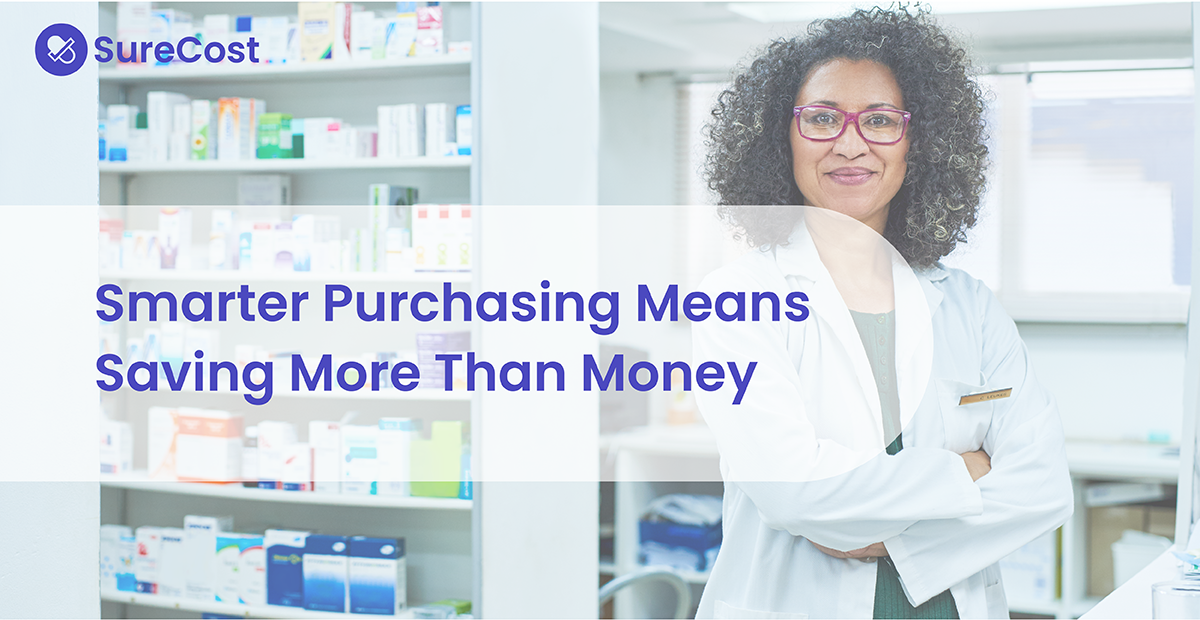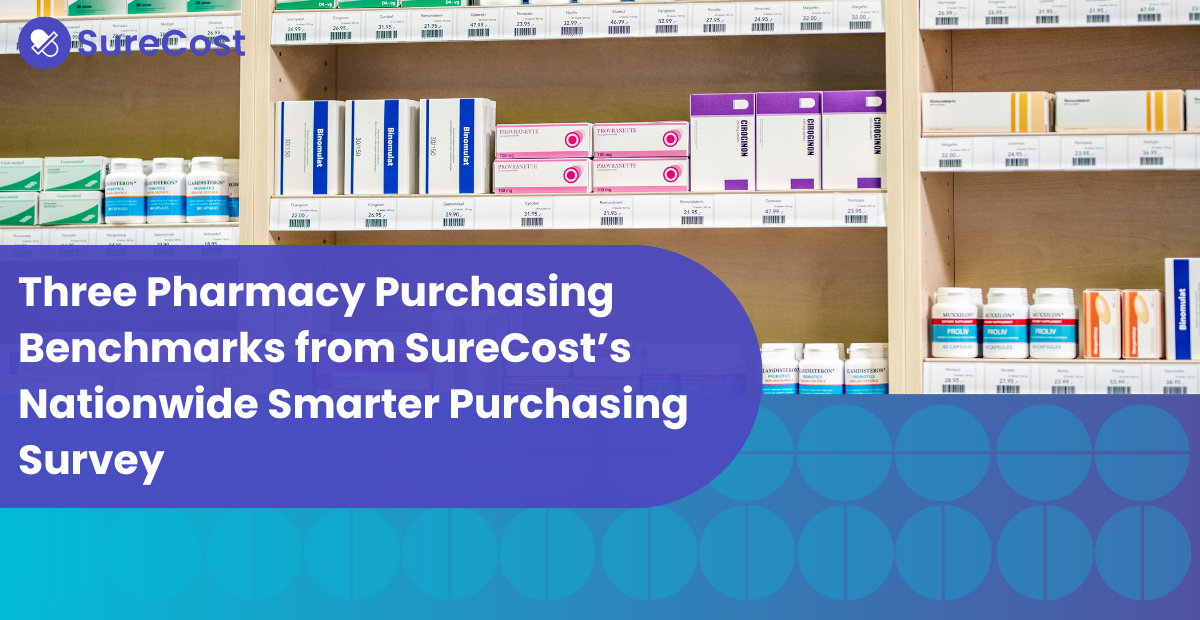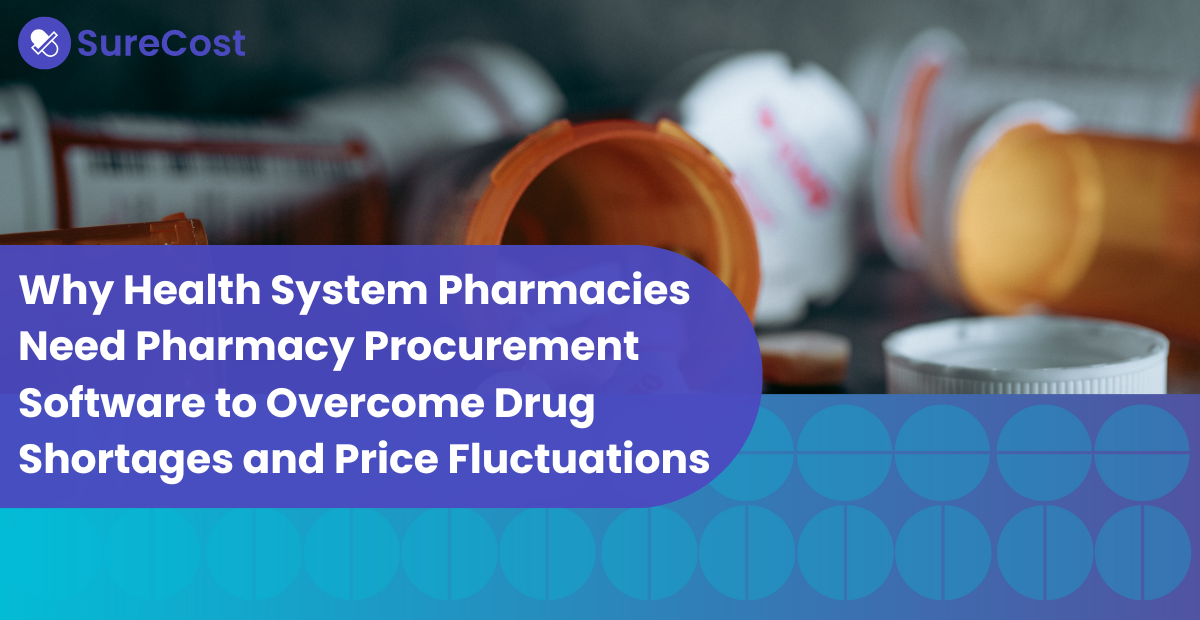With all the other responsibilities and challenges facing pharmacy professionals, purchasing might seem strictly transactional: pharmacies try to find the best price, and then they order the product. But to remain competitive, you need to do more than just buy cheaper items.
You need to manage all aspects of your purchasing. That means finding a solution for strategic procurement. Through smarter purchasing, you can find the true best option and unlock other benefits for your patients, your staff and your business.
The Pharmacy Industry Demands Smarter Purchasing
Over the past ten years, I’ve seen the margins for pharmacies’ gross profit decrease by roughly 4–5%. It’s simply harder for pharmacies to make a profit today.
Insurance carriers cover approximately 96% percent of all prescriptions in the United States. Coverage takes various forms such as private insurance companies, Medicare, Medicaid and discount cards. All of these carriers have a huge influence on pricing. With COGS accounting for roughly 75–80% of a pharmacy’s total spend and carriers eager to maximize their profits, that usually comes out of the pharmacy’s margins.
While pharmacies face challenges to their profitability, pharmacists face difficulty finding time for patients. Their responsibilities have expanded to include administering vaccines and adhering to enhanced post-pandemic sanitary protocols. That’s on top of increased managerial and clerical responsibilities just to run a pharmacy efficiently—all the things they don’t teach you in pharmacy school!
The basic economics of running a pharmacy once supported learning on the job. Not anymore. In addition to margin erosion, companies like pharmacy chains and mail order services have made the industry more competitive than ever. While their business suffers, pharmacists and technicians are also more likely to experience burnout. We already see considerable attrition in these roles.
Pharmacies can still succeed, but they have to be smart and efficient when it comes to all areas of their operations, especially purchasing.
The Lowest Price Isn’t Always What You Expect
Unsurprisingly, finding the lowest price is an important part of smarter purchasing. But you may be surprised by where you find it.
The pharmacy purchasing ecosystem is not designed for transparency or ease. It’s a web of vendors, price listings, catalogs and purchasing interfaces. Even with a seasoned team regularly looking over everything, there’s just too much for anyone to process. And most pharmacy staff don’t have the time to spare on such a painstaking process.
To maximize savings, you need easy access to every available option. That requires visibility into your entire catalog: primary wholesaler, secondary vendors, GPOs, buying groups and all purchasing sources. You’ll see who has the better price even amidst that glut data without spending hours tediously comparing all the information. It also requires a solution to help you and your team cut through the maze of codes and prices. That way, you find the best purchasing option every time.
Smarter purchasing also means accounting for the true cost of products beyond a vendor’s listed price. When you see that price, you should be able to instantly adjust for rebates and other factors that lower your cost of goods sold (COGS).
For example, some payers will pay a percent of the wholesale acquisition cost (WAC) rather than a maximum allowable cost, which may differ based on reimbursements. To accurately compare products based on the best price, look at the “spread”: what is the difference between your cost and potential reimbursement?
In some cases, it’s not the lowest-priced item. You might purchase an item with a higher catalog price but yields a better spread. This is another capability that will keep you competitive. But it requires a system to flag that opportunity and support your decision-making process. And that means having insight into all aspects of your pharmacy’s procurement.
Leverage Savings, Strategy and Efficiency
Smarter purchasing helps you understand the complete context of your purchasing. It empowers you to manage all those nuances: everything from buyers comparing products and placing purchasing orders to staff receiving items and your accounting team paying invoices.
That knowledge of your entire process allows you to find new saving opportunities and expose potential areas for loss. For example, let’s look at a few different sides of compliance.
As you expand your purchasing options, you want to ensure compliance with your primary vendor agreement and other contracts. That way, you’re not penalized for buying from different sources. That’s a lot to track manually for every purchase. But a solution that integrates all of your purchasing sources also assures compliance with your primary vendor and other agreements.
Yet you’re not just responsible for complying with a vendor’s terms. The reverse is also true. There’s no use finding those low prices and other purchasing opportunities if they’re not what you end up paying.
It’s important to check that you’re only paying for exactly what you ordered at the price you expected. That requires checking the price at the time you place the order, confirming your order is correct upon receipt of products and reviewing invoices for accuracy.
The same logic applies to rebates and other reimbursements and benefits. Make sure you know the potential reimbursement amount at the time you order, and follow up to ensure you get the correct reimbursement amount.
In other words, ensure transparency from your vendors. This isn’t a question of trust. It’s an acknowledgement that everyone makes mistakes, so it’s important to verify every step.
With the right tools in place, you can also ensure compliance that optimizes your reimbursement potential. By analyzing the volume sold according to rebate tiers, you can decide if you want to move more of a product to reach a higher tier. From there, you can configure your own formulary to ensure all purchases drive to a specific product even if you have multiple buyers on your team. This is much more convenient and reliable than constantly emailing your team or slapping sticky notes on your computer monitor!
Don’t forget inventory. Understanding what’s on your shelves, what’s available at another location, what you’re running low on or what products are already on the way must shape what you purchase.
You need to know more than what to buy; you have to understand how much to buy and when to buy it. Last-minute purchases can be expensive and time-consuming, especially if you’re scrambling to find a product. Worst of all, you risk failing to provide a prescription that a patient needs, and that impacts both their health and their trust.
On the other hand, you can have too much inventory. Making a purchase when you don’t actually need it means wasting money on medicine that may not be consumed or might expire on the shelves. And physically counting everything each time you need to make a decision is time-consuming and unreliable. But there are tools to track your inventory perpetually so you can instantly see what’s available and what you truly need.
You Should Be Saving More Than Money
No team (let alone a single purchasing manager) has the time to do all this on their own. They need tools that integrate and help verify all of these touchpoints. Specific instances may vary, but in general, a good rule of thumb is the less paper you're handling and the fewer physical steps needed to check all these steps, the better.
All of these smarter purchasing strategies help you find the best purchasing options, gain complete understanding and control over your procurement and acquire efficiency that saves you and your team time (and a lot of headaches).
Streamlining your purchasing process, shopping more efficiently and automating selected decisions will help you save time as well as money. And while “time is money,” it’s also hours you get back to consult with patients or support your staff.
We joined the pharmacy industry to serve people. That’s what we trained for. Patient care is one of the most rewarding aspects of the job. The more you can get out there and help people, the more rewarding the job can be.
Book a meeting with us. Let's create a smarter purchasing strategy for your pharmacy.




.png)



